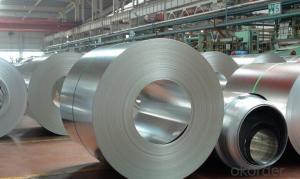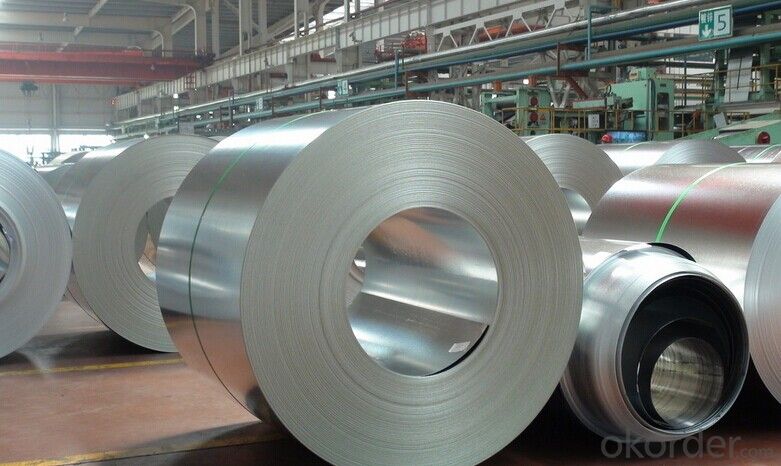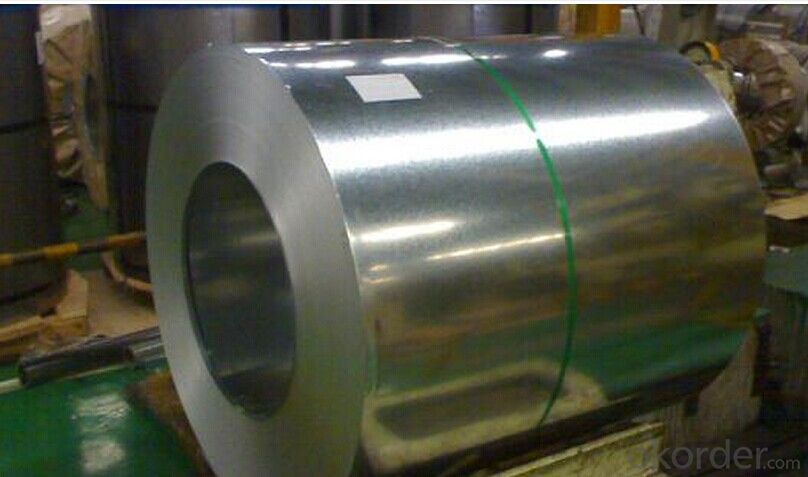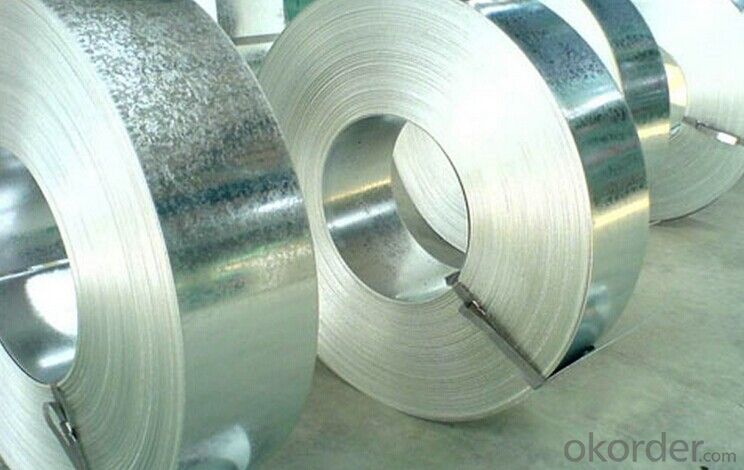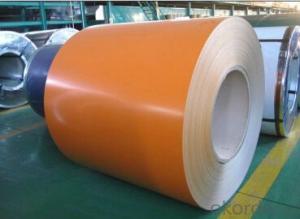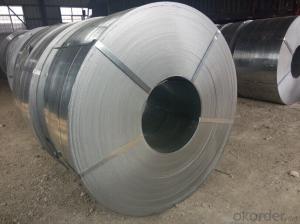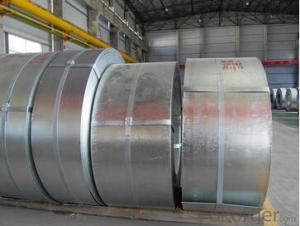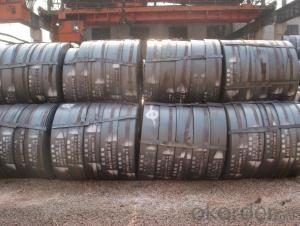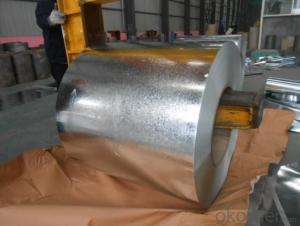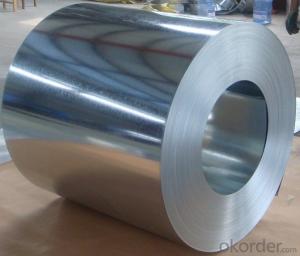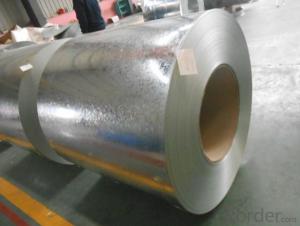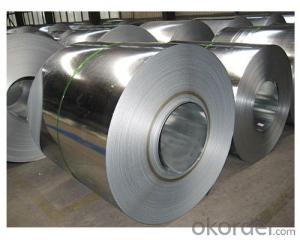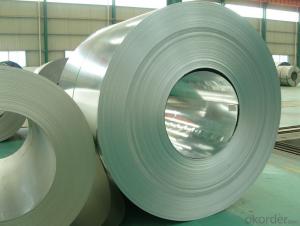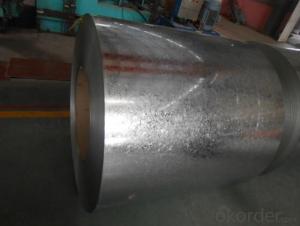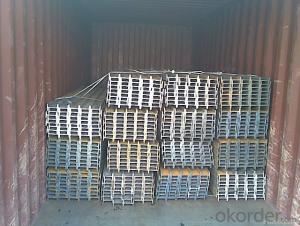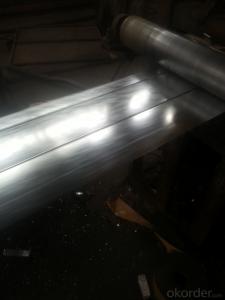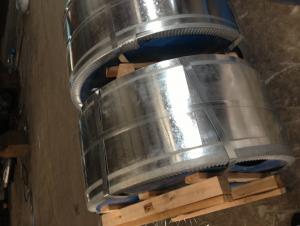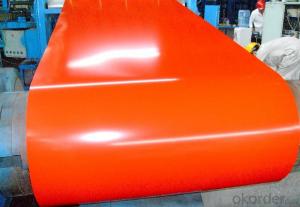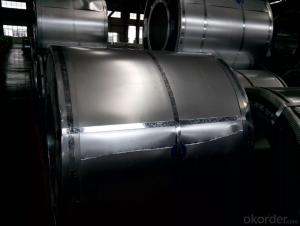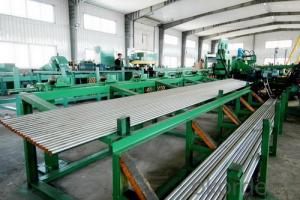Galvanized Steel Sheet in Ciols with Prime Quality Best Seller
- Loading Port:
- Shanghai
- Payment Terms:
- TT OR LC
- Min Order Qty:
- 100 m.t.
- Supply Capability:
- 10000 m.t./month
OKorder Service Pledge
OKorder Financial Service
You Might Also Like
1.Structure of Galvanized Steel Coil Description:
Hot-dip galvanized steel coils are available with a pure zinc coating through the hot-dip galvanizing process. It offers the economy, strength and formability of steel combined with the corrosion resistance of zinc. The hot-dip process is the process by which steel gets coated in layers of zinc to protect against rust. It is especially useful for countless outdoor and industrial applications.
2.Main Features of the Galvanized Steel Coil:
• Base material for countless outdoor and industrial applications
• High corrosion resistance
• High strength
• Good formability
• Rust- proof ability
• Good visual effect
3.Galvanized Steel Coil Images
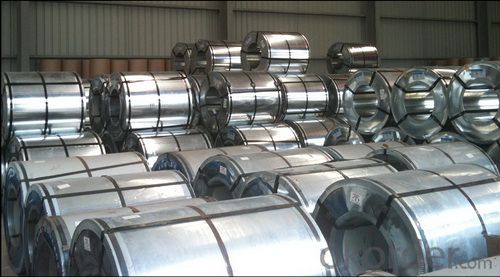
4.Galvanized Steel Coil Specification
Operate Standard: ASTM A653M-04/JIS G3302/DIN EN10143/GBT 2518-2008
Grade : SGCD,SGCH, Q195,DX51D
Zinc coating :40-180g( as required)
Width:914-1250mm(914mm, 1215mm,1250mm,1000mm the most common)
Coil id:508mm/610mm
Coil weight: 4-10 MT(as required)
Surface: regular/mini/zero spangle, chromated, skin pass, dry etc.
5.FAQ of Galvanized Steel Coil
We have organized several common questions for our clients,may help you sincerely:
1.How to guarantee the quality of the products?
We have established the international advanced quality management system,every link from raw material to final product we have strict quality test;We resolutely put an end to unqualified products flowing into the market. At the same time, we will provide necessary follow-up service assurance.
2. What is the minimum order quantity ?
Our MOQ is 50mt for each size. And we will consider to give more discount if you make big order like 1000 tons and more. Further more, the more appropriate payment term your offer the better price we can provide.
3.How long can we receive the product after purchase?
Usually within thirty working days after receiving buyer’s advance payment or LC. We will arrange the factory manufacturing as soon as possible. The cargo readiness usually takes 15-25 days, but the shipment will depend on the vessel situation.
- Q: How are steel strips measured for thickness?
- Steel strips are typically measured for thickness using a specialized tool called a micrometer or a thickness gauge. These instruments allow precise and accurate measurements by applying pressure to the strip and providing a digital or analog readout of its thickness.
- Q: How are steel strips processed for surface embossing?
- Steel strips are processed for surface embossing by passing them through a series of rollers or presses that have patterns or designs engraved on them. The strips are fed into the machine, and the pressure applied by the rollers or presses creates the desired embossed pattern on the surface of the steel strips.
- Q: What are the packaging options available for steel strips?
- The packaging options available for steel strips include coils, bundles, pallets, and custom sizes based on specific requirements.
- Q: How are steel strips processed for leveling?
- Through a series of mechanical and thermal treatments, steel strips are processed for leveling. The initial step is to uncoil the steel strips from a coil and feed them into a leveling machine. This machine contains a set of rollers that exert pressure on the strips to eliminate any unevenness and distortions in the material. The leveling process commences with the entry set of rollers, gradually increasing tension and pressure on the strips. This pressure aids in flattening any curvatures or waves on the strip's surface. The strips are guided by a series of rollers throughout the leveling machine to ensure consistent and uniform pressure is applied across the entire width. In the leveling process, it is common to introduce heat treatments to enhance the ductility and facilitate the straightening of the steel. This is typically achieved through a heat treatment furnace, where the strips are heated to a specific temperature and then rapidly cooled. This thermal treatment softens the steel, making it more malleable and facilitating the leveling process. After the leveling and heat treatment, the steel strips undergo another set of rollers called tension levelers. These rollers apply tension to the strips, further eliminating any residual stresses or deformations. The tension levelers work in conjunction with the previous leveling machine to ensure a flat and even surface is achieved. Once the leveling process is complete, the steel strips may undergo additional processes such as slitting, coating, or further heat treatments, depending on the intended application. This guarantees that the final product meets the desired specifications in terms of thickness, surface quality, and mechanical properties. In summary, the leveling of steel strips involves a combination of mechanical and thermal treatments to eliminate distortions, curvatures, and stresses in the material. This process results in a flat and even surface, making the steel strips suitable for various industrial applications.
- Q: What is the typical thickness tolerance for steel strips?
- The typical thickness tolerance for steel strips can vary depending on the specific application and industry standards. However, a common range for thickness tolerance in steel strips is typically around ±0.001 to ±0.005 inches.
- Q: How are steel strips processed for surface finishing?
- Steel strips are processed for surface finishing through various techniques such as pickling, cold rolling, annealing, and coating. These processes involve removing impurities, reducing thickness, improving mechanical properties, and applying protective layers to enhance the appearance and durability of the steel strips.
- Q: How are steel strips used in the production of electronics?
- The production of electronics relies on the utilization of steel strips in various manners. One prevalent application involves their use in the manufacturing process of printed circuit boards (PCBs). These PCBs are essential elements within electronic devices as they serve as platforms for the mounting and interconnecting of diverse electronic components. By serving as a base material, steel strips offer stability and support to the PCBs. Additionally, electronic enclosures also employ steel strips during production. These enclosures act as protective housing for the internal components of electronic devices, shielding them from external factors including dust, moisture, and physical harm. Steel strips are frequently employed in constructing the frames or outer shells of these enclosures, guaranteeing both strength and durability. Moreover, connectors and terminals, vital for establishing connections between different parts of electronic devices such as cables, wires, and circuit boards, rely on steel strips during production. By utilizing steel strips, manufacturers are able to create reliable and robust connections, ensuring the efficient transmission of electrical signals. In conclusion, steel strips assume a pivotal role in the production of electronics by acting as a base material for PCBs, providing structural support to electronic enclosures, and enabling the creation of connectors and terminals. Their durability, strength, and conductivity make them an indispensable component within the manufacturing process of electronic devices.
- Q: What are the common flatness tolerances for steel strips?
- The steel strip manufacturing industry has established generally accepted standards and guidelines for flatness tolerances. These tolerances are crucial to ensure that steel strips meet quality standards and are suitable for their intended use. They can be specified in terms of deviation from a perfectly flat surface, either as a maximum deviation in millimeters or as a percentage of the strip width. Typically, the most common flatness tolerances for steel strips range from 0.1mm to 0.5mm, or 0.1% to 0.5% of the strip width. However, it is important to note that these tolerances can vary depending on the specific industry and application, as well as the type and thickness of the steel strip. Thinner strips generally require tighter flatness tolerances due to their higher susceptibility to deformation. Determining the appropriate flatness tolerances for steel strips should be done in accordance with industry standards, customer requirements, and the intended application. This is particularly important in industries such as automotive, construction, and electronics, where further processing of the steel strips is necessary.
- Q: How are steel strips used in the production of machinery?
- Due to their versatility and durability, steel strips find wide application in the production of machinery. These narrow bands of steel are utilized at various stages of machinery production. One of the primary uses of steel strips in machinery production lies in fabricating machine components. These strips can be cut, shaped, and formed into specific parts like gears, springs, brackets, and clamps. The high tensile strength and resistance to deformation of steel make it an ideal material for these critical components, ensuring their longevity and reliability in machinery operation. Moreover, steel strips are commonly employed in constructing conveyor systems and assembly lines. They serve as belt materials that transport materials or finished products within the machinery. The smooth and flat surface of steel strips allows for efficient movement and reduces friction, enabling the machinery to operate smoothly and consistently. Furthermore, steel strips with magnetic properties, such as electrical steel, are used in the production of electric motors and generators. These strips act as the core material, facilitating efficient and reliable generation and transmission of electrical energy. In addition to their mechanical and electrical properties, steel strips play a vital role in machinery production due to their corrosion resistance. Machinery components exposed to moisture, chemicals, or harsh environments often require protection against corrosion. Coating these components with a layer of corrosion-resistant steel strips significantly extends the machinery's lifespan, reducing maintenance and replacement costs. In summary, steel strips are essential in machinery production because of their versatility, durability, and numerous beneficial properties. Whether it is fabricating components, constructing conveyor systems, enhancing electrical performance, or preventing corrosion, steel strips contribute to the reliability and efficiency of machinery in various industries.
- Q: How are steel strips used in the fabrication of furniture?
- Steel strips can be used in the fabrication of furniture in various ways. They are often used as reinforcement or support in the structural components of furniture, such as in the frames of chairs or tables. Steel strips can also be used as decorative elements, adding a sleek and modern touch to furniture designs. Additionally, they can be used for connecting different parts of furniture, providing stability and durability. Overall, steel strips play a crucial role in enhancing the strength, stability, and aesthetic appeal of furniture.
Send your message to us
Galvanized Steel Sheet in Ciols with Prime Quality Best Seller
- Loading Port:
- Shanghai
- Payment Terms:
- TT OR LC
- Min Order Qty:
- 100 m.t.
- Supply Capability:
- 10000 m.t./month
OKorder Service Pledge
OKorder Financial Service
Similar products
Hot products
Hot Searches
Related keywords
